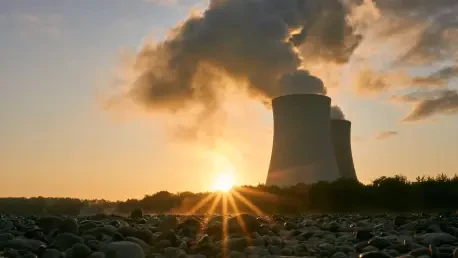Researchers at the University of Illinois Urbana-Champaign are utilizing artificial intelligence (AI) to enhance monitoring within nuclear energy systems. Led by assistant professor Syed Bahauddin Alam and supported by AI experts from Illinois Computes, the team’s AI-driven approach offers significant improvements over traditional methods, providing real-time monitoring and predictive capabilities.
Nuclear power systems require strict safety protocols and continuous monitoring due to their hazardous environments. Traditional physical sensors often fall short in these extreme conditions, leading to incomplete data and delayed responses. AI and machine learning (ML) offer revolutionary alternatives. Alam’s team, including NCSA research assistants and NPRE graduate students, has developed a method that speeds up predictions by 1,400 times compared to traditional techniques.
Their breakthrough research, published in npj Materials Degradation, focuses on machine learning-driven virtual sensors. Using deep-learning operator-surrogate models like Deep Operator Neural Networks (DeepONet), these virtual sensors provide critical insights into thermal-hydraulic parameters, essential for reactor safety and efficiency. DeepONet, trained on GPUs, can make instantaneous and accurate multiphysics predictions over the entire computational domain.
In practical terms, AI augments human oversight by creating a “virtual map” of reactor operations, allowing continuous feedback without physical instruments in hazardous areas. This results in faster, more precise monitoring and data collection, crucial for early detection of potential issues. Collaboration with NCSA researchers and the use of Delta supercomputing resources were key to the project’s success.
The integration of AI, high-performance computing, and domain-specific expertise highlights a significant advance in real-time monitoring and predictive analysis of nuclear reactors. This research underscores the transformative potential of computational science in enhancing nuclear safety, offering a sophisticated, efficient, and reliable approach for monitoring complex energy systems.
Alam and his team’s work exemplifies the successful application of interdisciplinary research and cutting-edge technology in addressing the critical challenges of nuclear energy. The collaboration between the University of Illinois Urbana-Champaign, NCSA, and the Grainger College of Engineering showcases the power of innovative approaches in revolutionizing nuclear energy safety and efficiency.









